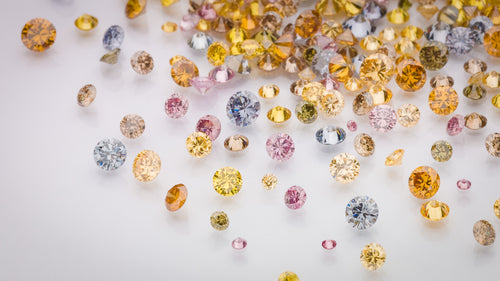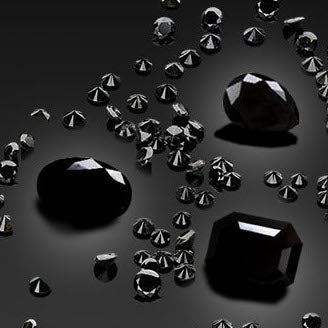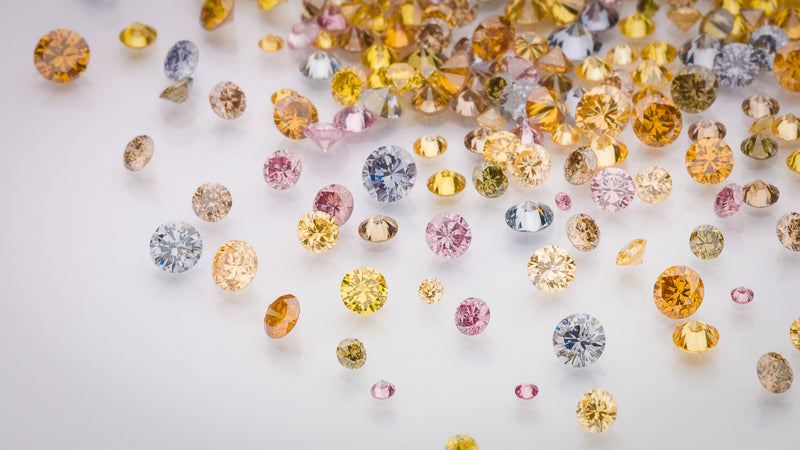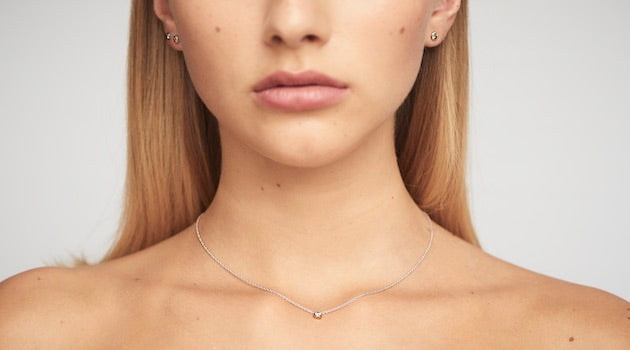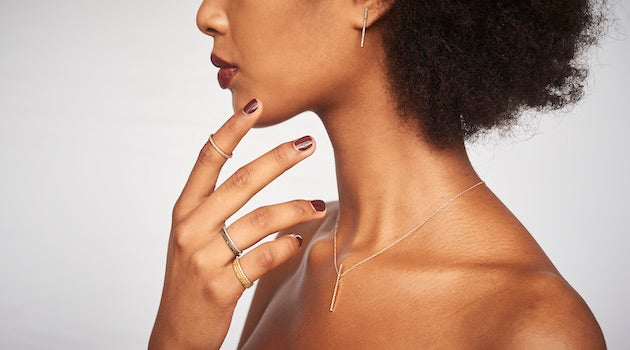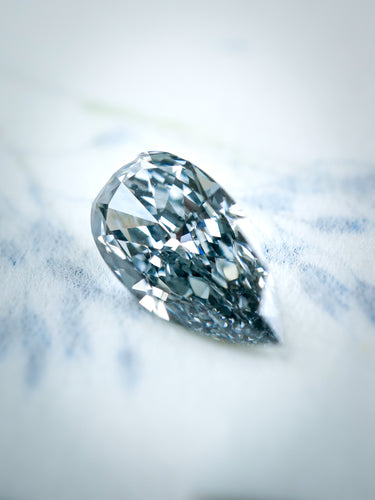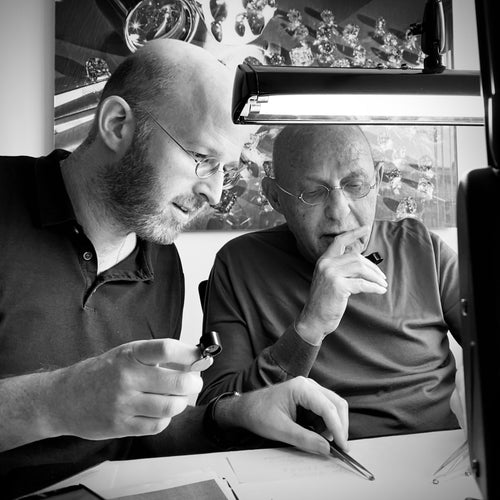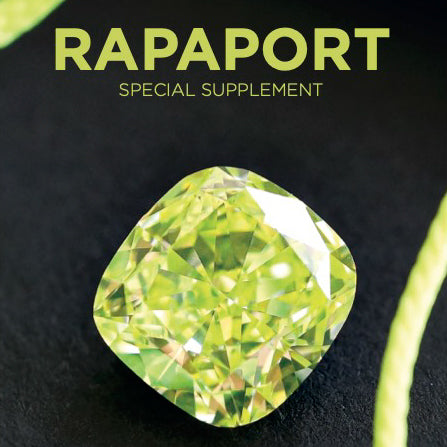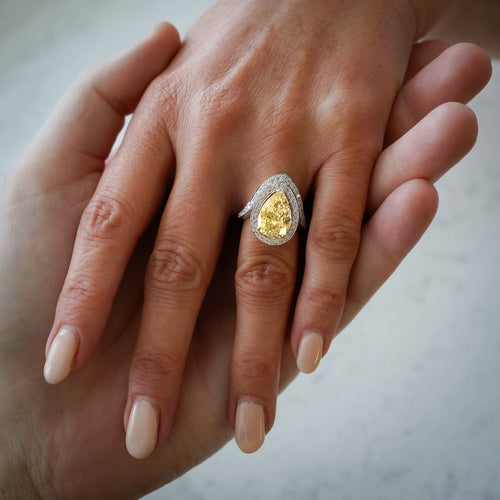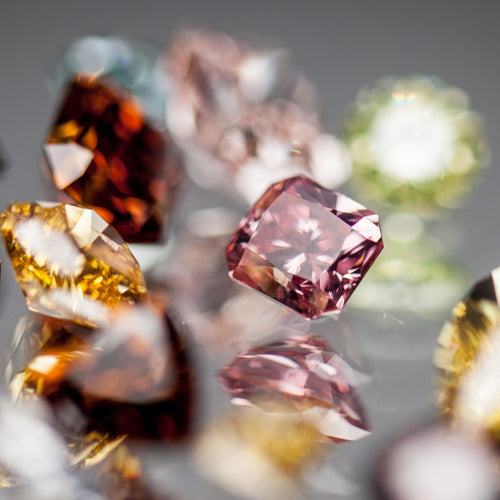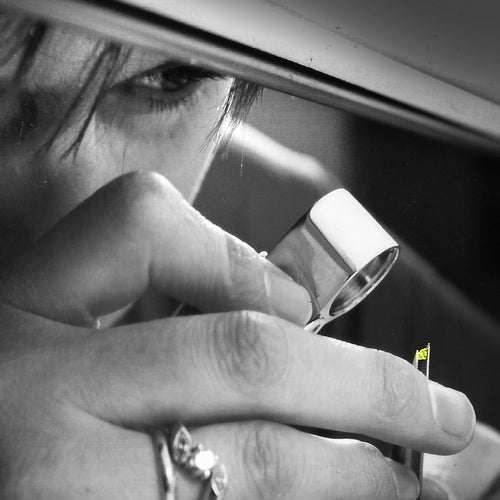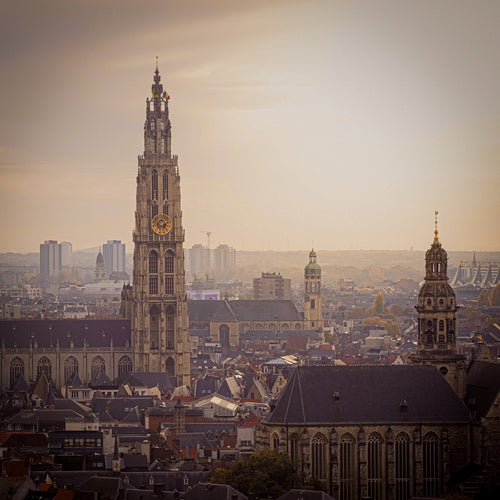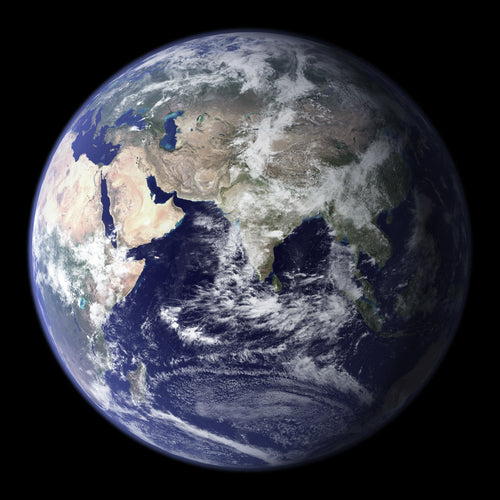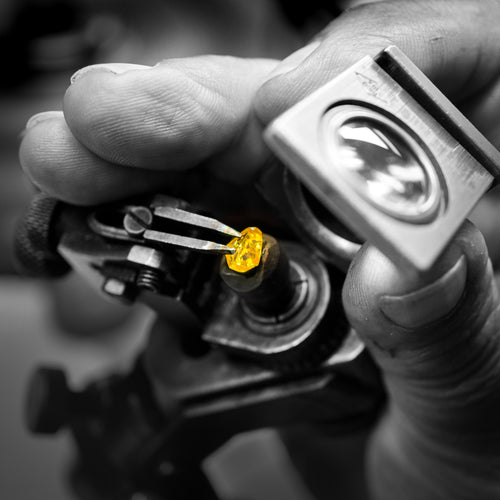Rubies, sapphires, and emeralds have captivated gemstone enthusiasts for centuries. These beautiful colored stones are prized for their bold colors. However, natural color diamonds are a dazzling alternative – literally!
Colored diamonds are always shinier than colored stones. Their natural hues offer a rainbow of colors that rival traditional colored gems. Below, we’ll explore the unique qualities of rubies, sapphires, and emeralds while also showing you why color diamonds, including pink, green, and blue varieties, deserve a place at the top of your wish list.
Want to view our color diamonds? Check out our Natural Diamond Collections.
Rubies, Sapphires, Emeralds, and Natural Color Diamonds
Gemstones have captivated humanity for centuries, becoming symbols of wealth, beauty, and power. Among the most sought-after are rubies, sapphires, emeralds, and natural color diamonds—each possessing unique qualities that make them treasures of the earth. From the fiery red of rubies to the serene blue of sapphires, the lush green of emeralds, and the kaleidoscope of hues found in natural color diamonds, these gems are marvels of nature.
There are four types of precious stones: diamonds, rubies, sapphires and emeralds. Each type has its own specific chemical and physical properties. Diamonds are made from carbon, rubies and sapphires from alumina and emeralds from beryllium.
Diamonds make up a category of their own, while the three other types of precious stones - rubies, sapphires and emeralds - are all referred to as "colored stones".
Understanding Rubies, Sapphires, and Emeralds
Scientifically speaking, rubies and sapphires are the same mineral (corundum). Both are made of alumina and oxygen, but differ in color. When a corundum is red, it is classified as a ruby, and when it’s blue, it is called a sapphire. However, when colored differently, the color is mentioned as a prefix to the sapphire ( i.e. yellow sapphire). As for emeralds, they are made of beryllium (beryls).
Rubies
Rubies are the red variety of the mineral corundum. They are formed from alumina (aluminum oxide) and oxygen and their color is primarily caused by trace amounts of chromium. The most desirable rubies exhibit a vivid red hue, often referred to as "pigeon’s blood red".
Rubies score 9 on the Mohs scale, making them resistant to scratches and suitable for everyday jewelry. They also exhibit high refractive indices, which contributes to their brilliance.
High-quality rubies with vivid saturation and minimal inclusions are valuable gemstones. Larger carats and ideal coloration significantly increase their price.
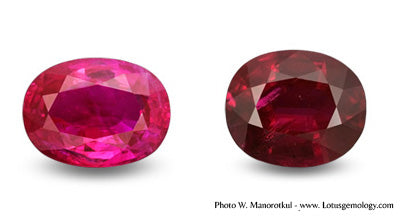
Sapphires
Sapphires are another variety of corundum that occurs in colors other than red. Their color depends on trace elements like iron, titanium, or chromium. Blue sapphires are the most well know and their color is to traces of iron and titanium. The presence of other elements such as iron, titanium, chromium, copper, or magnesium, can cause the color of sapphires to vary becoming for example yellow sapphires, pink sapphires, and more.
Like rubies, sapphires score 9 on the Mohs scale, making them durable and scratch-resistant.

Emeralds
Emeralds belong to the beryl family and are distinguished by their green color caused by chromium or vanadium. They often contain inclusions called "jardin," which are considered part of their natural beauty. The most desirable emeralds display a deep bluish-green hue with even color distribution.
Emeralds are softer compared to rubies and sapphires, with a Mohs hardness of 7.5–8. They are prone to chipping and typically feature visible inclusions.
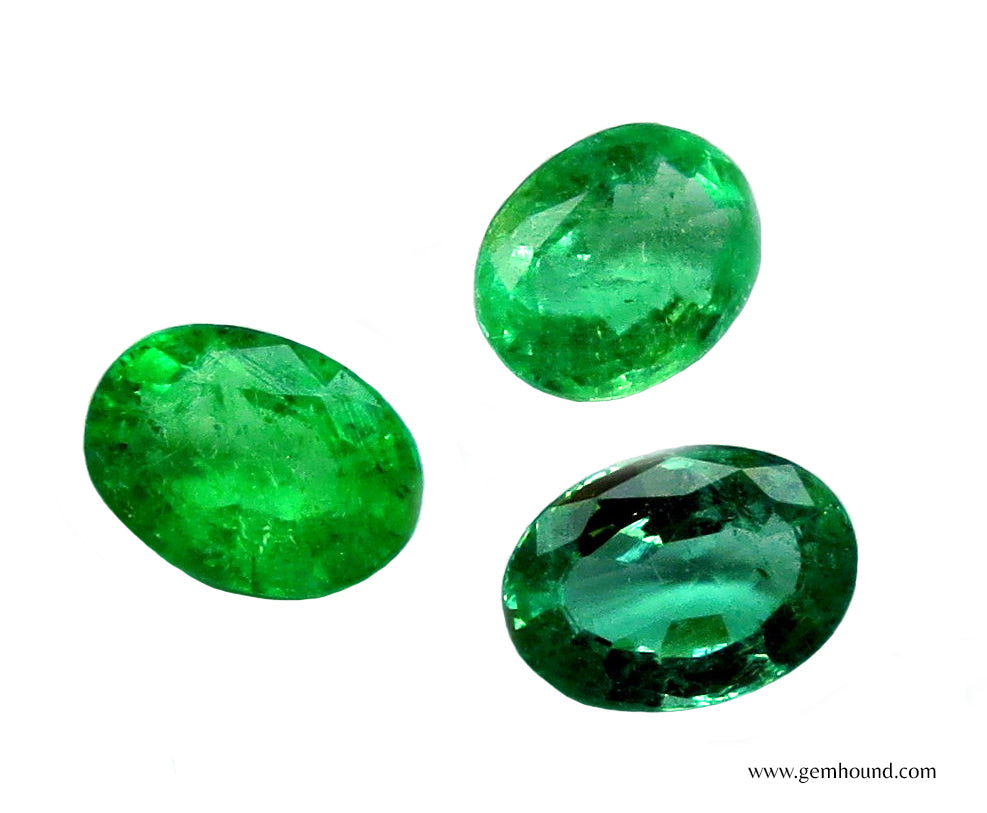
Natural Color Diamonds
Diamonds form when carbon atoms bond in a crystal lattice under intense heat and pressure. Trace elements and structural irregularities introduce colourful hues, making them some of the most prized gemstones on Earth.
Diamonds of all colors can be found in nature. Over 300 colors have been identified, and each of these come in several shades making the possibilities infinite.
Diamonds are the hardest gemstone scoring 10 on the Mohs scale 10 and offering unmatched durability.

Why Natural Color Diamonds Rival Traditional Colored Stones
Endless Color Possibilities
While rubies, sapphires, and emeralds each boast iconic tones, natural color diamonds offer a kaleidoscope of shades. These range from soft pinks and intense greens and blues, to fiery oranges, each formed by unique trace elements interacting with carbon during the stone’s creation. Their vast color range underscores just how exclusive these diamonds can be.
Exceptional Rarity and Value
Large rubies, sapphires, and emeralds can be hard to find, yet significant-sized color diamonds are rarer still. This scarcity elevates their prestige and their value. Natural Color Diamonds also appreciate in value over time which makes them an interesting investment option.
Superior Durability
Diamonds are the hardest natural material (Mohs hardness of 10), outstripping rubies, sapphires (9) and emeralds (7.5–8). This resilience translates into worry-free wear. This makes them ideal for engagement rings, daily jewelry, or investment pieces you plan to pass down for generations.
Choosing Natural Color Diamonds Instead of Ruby, Sapphire, or Emeralds
For Lovers of Rubies:

If the passionate red of a ruby appeals to you, consider a Raspberry, Burgundy, or Auburn Diamond. The first two options are pink diamonds with a strong vivid saturation while the third option is a brown hue with reddish tones.
Explore the spectrum of pinks, from baby pink to vivid pink, in our Natural Pink Diamonds collection and our browns from Champagne to Chocolate and Auburn in our Natural Brown Diamonds.
For Admirers of Sapphires:

Sapphires represent royalty, wisdom, calmness and loyalty. Natural blue diamonds have been known to symbolize strength, rarity, confidence, and individuality. Blue diamonds may be a great option if you are looking for a brighter more radiant sparkle. Their color can range from faint to deep, vivid hues, sometimes having a gray or steel-like undertone.
Compare the depth of a sapphire’s hue with the sparkle of a blue diamond in our Natural Blue Diamonds collection.
If what you are looking into are Yellow or Pink Sapphires navigate our collection of Yellow and Pink Natural Diamonds and get to know the several hues these beautiful stones are available.
For Emerald Enthusiasts: Green Diamonds

Emerald lovers appreciate the lush, vibrant green that has captivated civilizations for centuries. With unmatched clarity, brightness, and an intriguing rarity that ensures a timeless investment, natural green diamonds can be a great option. See the many shades on display in our Natural Green Diamonds collection.
How to Decide: Colored Stones vs. Natural Color Diamonds
When deciding between a ruby, sapphire, emerald, or color diamond, consider the following:
- Color Intensity: Do you want to make a statement with a classic red, blue, or green gemstone? Or is the statement you want to make worth something altogether more unique?
- Durability: Is the jewelry for occasional wear or everyday use?
- Rarity and Value: Are you seeking a long-term investment or a family heirloom?
- Design Flexibility: Are you open to a rainbow of possibilities, or do you prefer a signature color?
By listing these factors, you can pinpoint which stone aligns best with your preferences and needs.
Begin Your Journey with Natural Color Diamonds
Are you intrigued by the shimmer of pink, the tranquil charm of green, or the regal sophistication of blue? Explore each hue side by side. You'll see how natural color diamonds measure up against rubies, sapphires, and emeralds in both brilliance and rarity.
Ready to Explore?
Each collection offers an incredible assortment of hues with each stone having their special uniqueness.. Natural color diamonds provide a fresh, captivating alternative to rubies, sapphires, and emeralds. They're great for upgrading an engagement ring, replacing a cherished piece, purchasing an investment, or simply treating yourself.
Ready to find the perfect diamond? Check out our Natural Diamond Collections.
